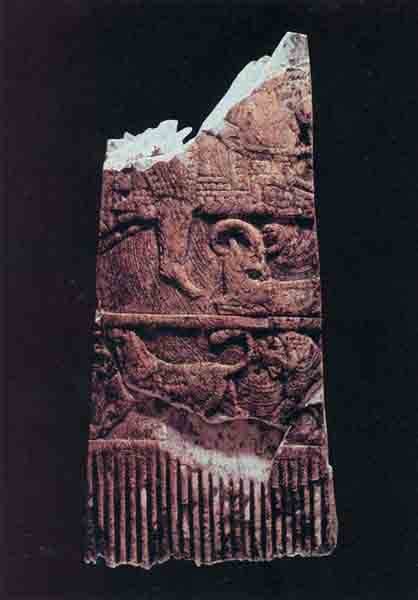Image Details

Carl Andrews
Persian presence. Shown here is the residue of sixth- through fourth-century B.C. Persian culture in Ashkelon. Despite the fact that this is called the Persian period, Persian culture was nevertheless relatively scant, especially compared to remains reflecting Phoenician culture. One important indicator of a Persian presence is an exquisitely carved ivory comb showing a hunter on horseback (note that he sits on a decorated horse blanket and not in a saddle and that the stirrup had not yet been invented). Below the horse is a reclining ibex; two lions march across the register at bottom. The other side of the comb (not shown) shows two men thrusting swords into a lion. Though the top of the comb is broken off and the edges had been pared down in antiquity, Dr. Abbas Alizadeh has reconstructed the original scene using contemporary Persian iconography (see drawing).
